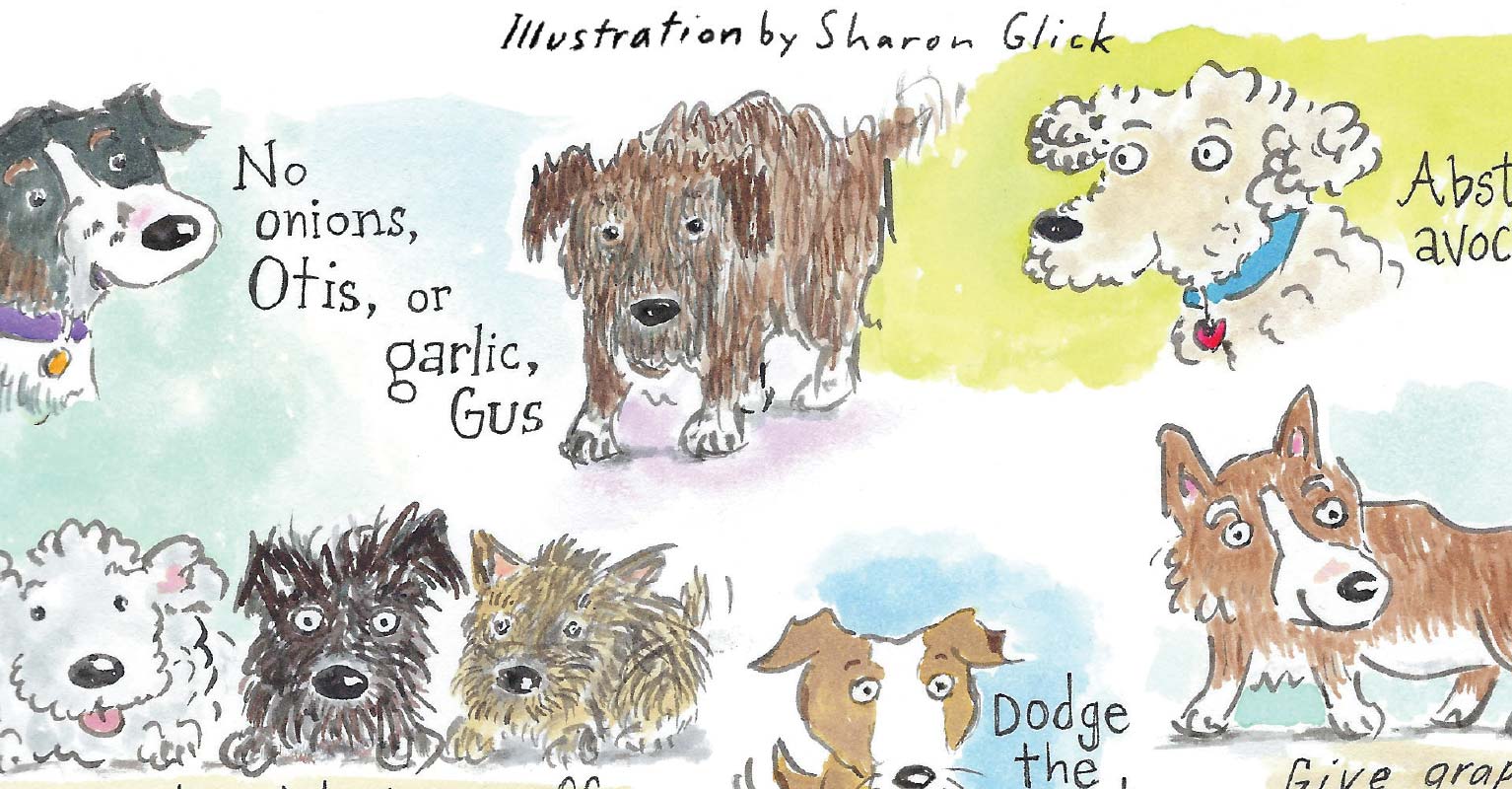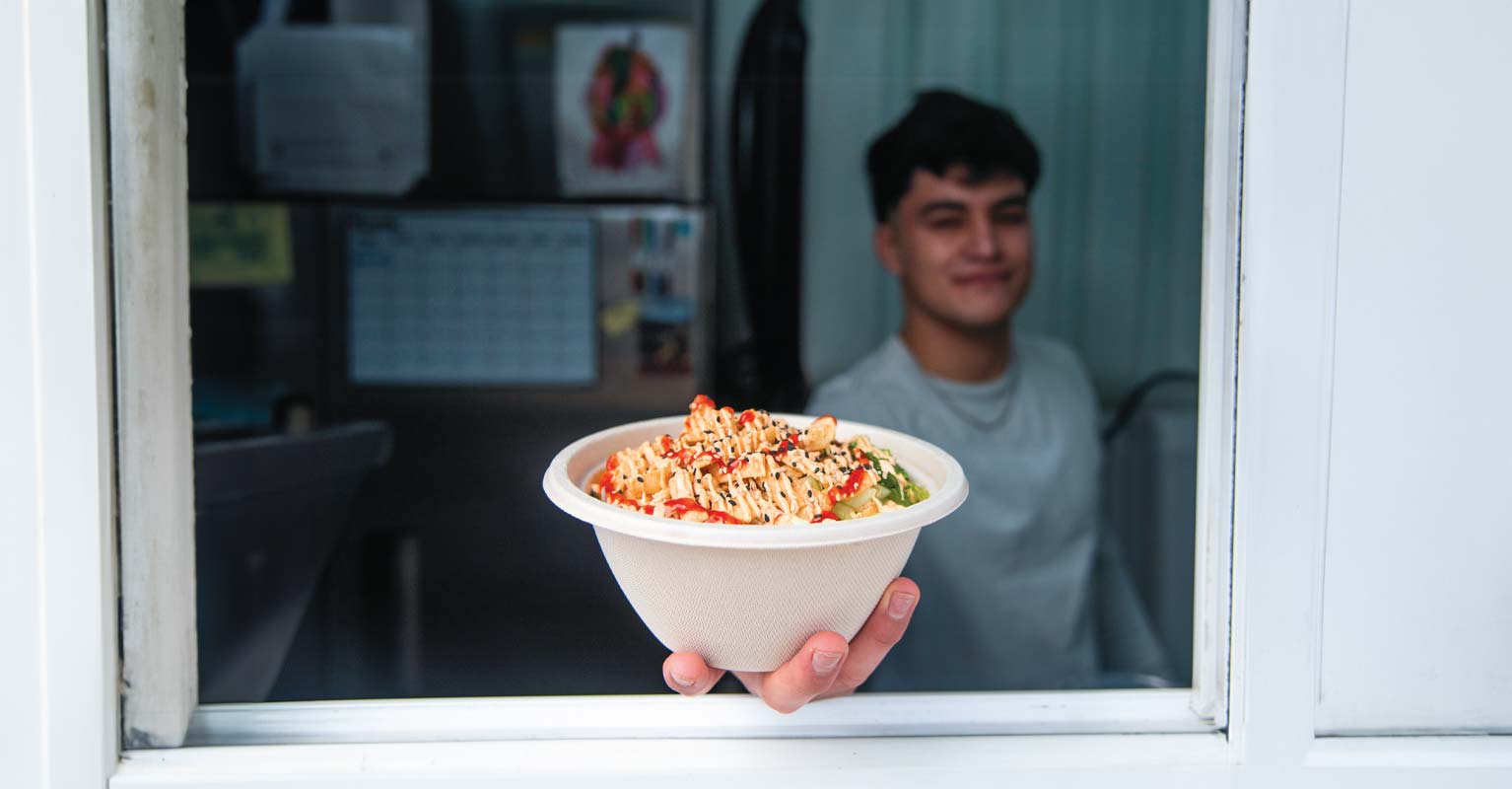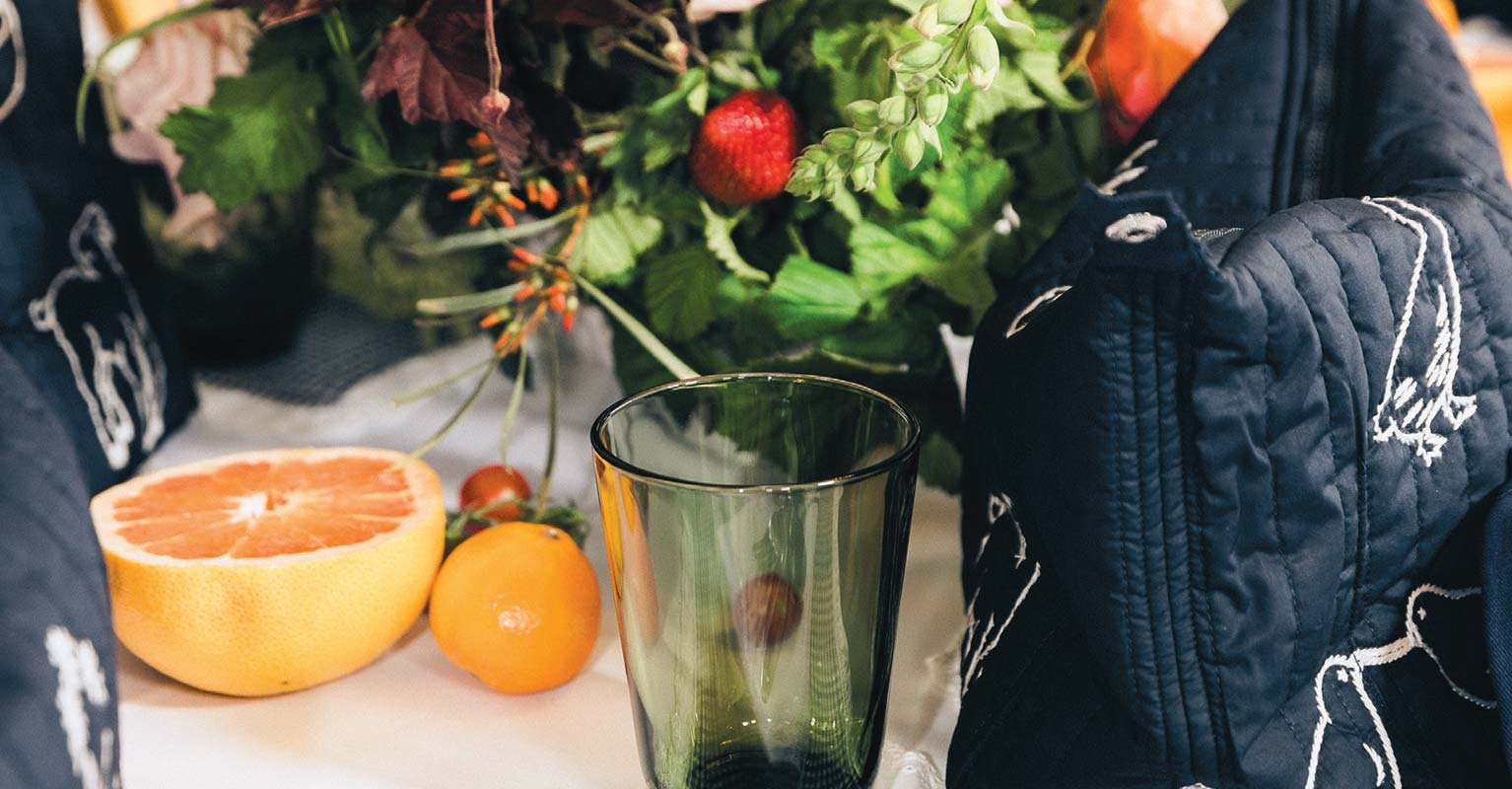I drive over the short bridge to Livingston’s 9th Street Island and meet Heather Muldoon on the grounds of her farm. We chat in the greenhouse, where only a few plants and flowers linger following the last day of her on-site retail sales for the season. Her arms a tawny brown from weeks in the sun, Muldoon radiates positive energy.
At its essence, Muldoon’s property is a wild place to grow flowers and herbs of many kinds. It is nestled on a small island within the Yellowstone River. Bald eagles and osprey wing overhead, and with bear, moose, and deer passing through, it feels like a rural oasis despite being just a handful of blocks from downtown.
In February, Muldoon receives around 6,000 seedling plugs, and until late June the greenhouse space is jam packed. This season, one larger plug delivery arrived while the roads were a snowy, icy mess. Muldoon says this is the reality of farming in Montana, where conditions exist for a truck to be weather delayed while carrying pallets of vulnerable plants.
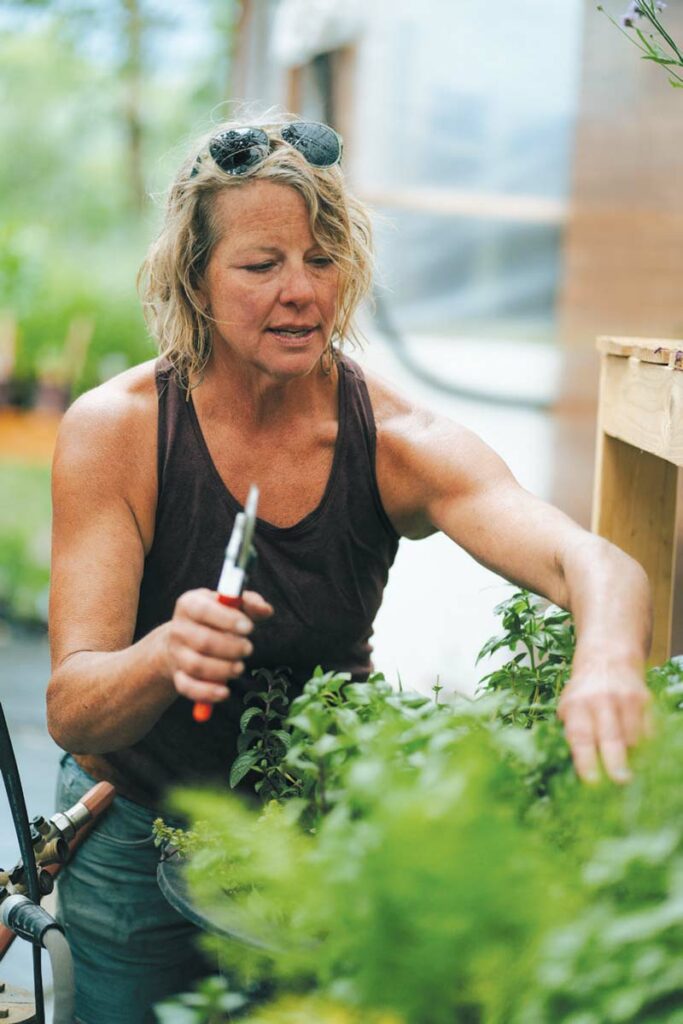
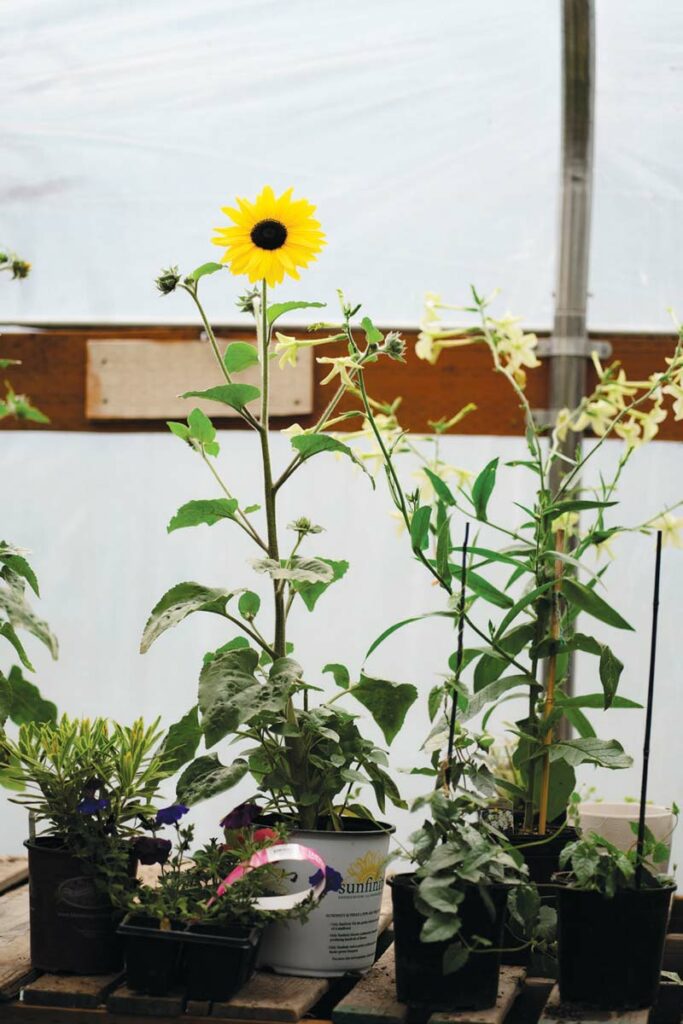
The “vortex” is she how she refers to her greenhouses and the six branches of her business, which are all in motion throughout the growing season. Her business is called Suncatcher, and includes an on-site retail operation running May through June, a six-woman landscaping and gardening crew, landscape design projects, a cut-flower farm, development of custom containers, and a container watering service. “It’s nutty,” she says with a laugh.
If you’ve appreciated downtown Livingston’s flower containers, then you’ve already been introduced to Suncatcher.
Muldoon enjoys sharing her knowledge in the hope that it will help people gain confidence to get growing. She has 20 years of experience caring for plants in Montana’s brief, and often extreme, summers. She collaborates with her customers to help plants grow in any space or shape they want. Her passion for flowers and design translates into helping people engage in growing. She encourages her customers to ask about specific plant care, natural ways to combat insect predators, and what flowers are best for pollinators.
A self-described “plant nerd,” Muldoon tells me she does “ornamental horticulture,” which translates to a great aesthetic that dabbles in sustainability. She is pleased to hire employees who are local students of landscape design and food sustainability. She describes her designer, Jay Manford, as a “wizard with plants.” With his background in cut flowers and similar aesthetic to Muldoon’s, she says it’s easy to co-create.
Muldoon considers Rocky Mountain plant landscape designer Linda Iverson as a mentor and has learned perennial tricks from her, such as how to maintain a meadow seeded with wildflowers and non-toxic weed management. Control of unwelcome plants, like noxious weeds, begins by noticing their appearance on the land. Following up by controlling their ability to go to seed is essential, since many are perennials. She teaches her clients how to work with the weeds on their property.
Suncatcher’s greenhouse doors are left open to encourage insects—like predatory wasps and some bees—to eat aphids and other plant-eating insects, and Muldoon follows sustainable and environmentally friendly practices.
She shows me her outdoor beds, the bachelor buttons and Queen Anne’s Lace still shaking off last night’s rainstorm. It’s still relatively cool, and we note the absence of bees.
Muldoon’s team frequently uses edible flowers and herbs in their container gardens. Dill, garden sage, basil, borage, lovage, and scented geranium are all mainstays in their cut-flower bouquets and containers, as well as hardy annuals like zinnia, iris, and larkspur.
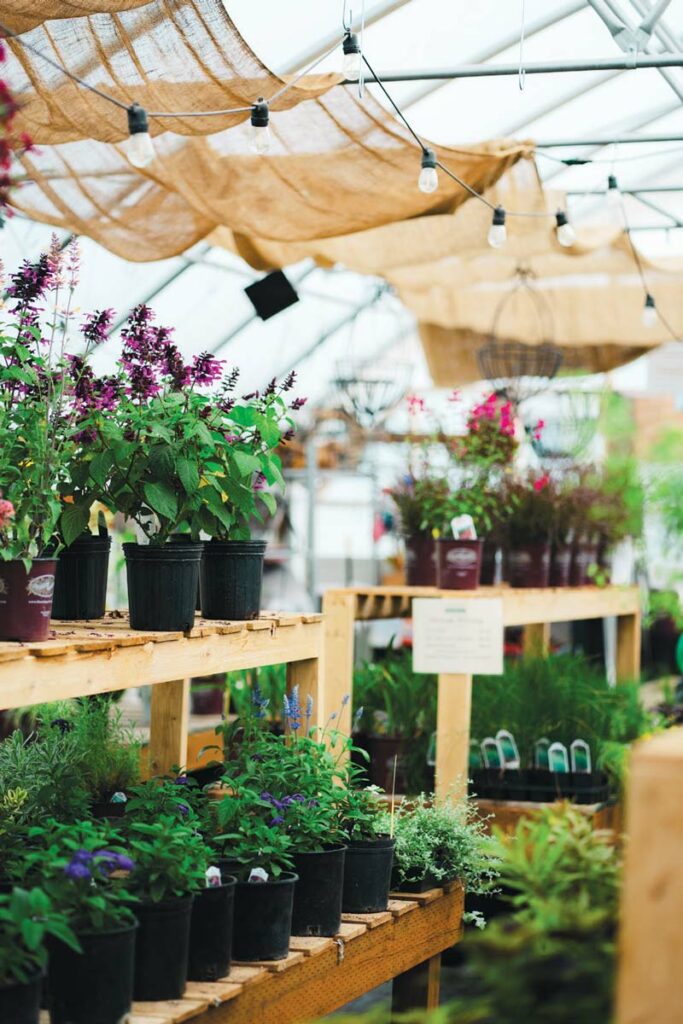
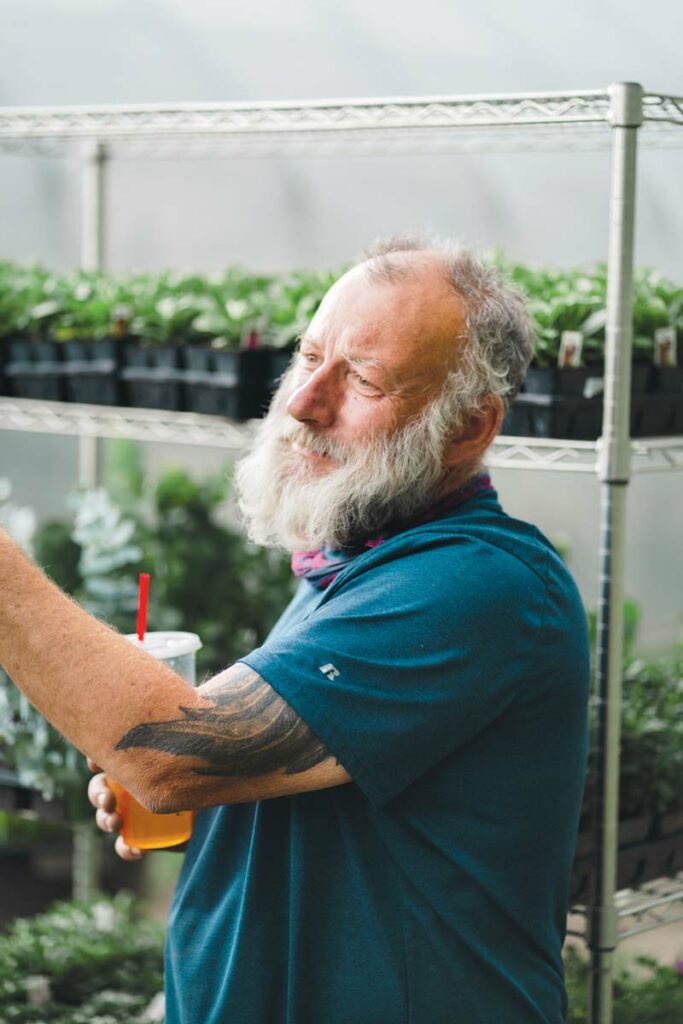
Just below the flower beds, the dark-green waters of the Yellowstone River flow by. There’s a sandbar that awaits sundrenched farm workers seeking to temper the summer heat.
In June of 2022, the Yellowstone River flooded and submerged much of the island. Inhabitants had a mere two-hour notice to evacuate. Muldoon’s flower and plant season was a loss due to the timing. Despite the tragedy, she was overwhelmed with community support. An outpouring of friends and AmeriCorps volunteers arrived to help. They cleared silt from the plants that could be salvaged; they removed mud and silt from her greenhouse, retail tent, and the outdoor beds that had been underwater.
Despite the chaos, she tells me about discovering a pallet of lavender plants completely undisturbed, found days later after it had floated several acres away.
Reclamation of the property due to the massive dumping of silt was still ongoing until the end of last summer. This Yellowstone oasis is a place that Muldoon acknowledges will flood again. Her plan for future flood events is to activate a list of friends with trailers to help evacuate her plants.
She starts watering the leftover plants inside the greenhouse, and our conversation drifts into discussions of what’s next. Suncatcher is a new business name, adopted this year after previously operating as Heather’s Garden Service for 18 years.
“I had my whole crew help [with the name],” Muldoon says. “We were looking for a name that reflected this idea about the culture we have created, what we do.” The in-person brainstorm session keyed into respect for each other and for doing essential self-care for their hardworking bodies. Also, all her employees share a deep connection to the plant world and to the river. “All the people that work for me are soulful,” she adds.
This season, she is only selling annuals, phasing out perennials and shrubs. The cut-flower farm has become its own force, and Muldoon intends to expand her custom containers with another 16- by 28-foot greenhouse this year.
Additionally, Muldoon is offering about 30 subscriptions to a Suncatcher Flower CSA that will run for 12 weeks from June to August. She is also playing with ideas for hosting small events that center around edible flowers and herbs, and she is considering off-site pop-up flower bouquet bars and special U-pick events on the island.
“Any way you can be out in nature,” she says with a wink, “it’s good for the soul.”


